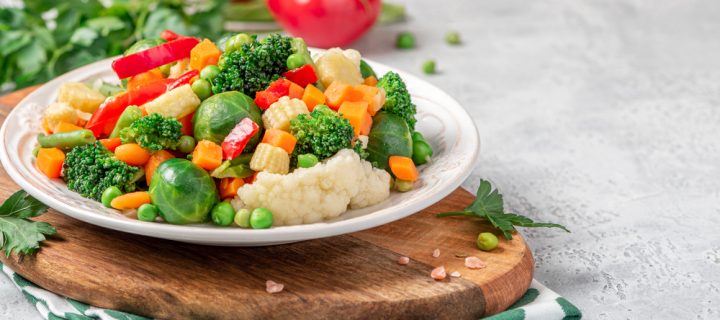You may love them or loathe them, but there’s no doubt vegetables are a vital part of a healthy diet. Despite what you think of them, they provide a boon of nutrition – so why not maximize their returns if you’re eating them anyway?
Interestingly, eating veggies the ‘all-natural’ way isn’t better in this case. Studies show the process of cooking breaks down protective outer layers and cellular structure of many vegetables, unlocking nutrients to be absorbed readily.
“Cooking vegetables helps increase the amount of minerals, like calcium, magnesium and iron, available to the body,” says registered dietitian Elaine Magee, author of Food Synergy: Unleash Hundreds of Powerful Healing Food Combinations to Fight Disease and Live Well.
To get the most out of your veggies, it’s all about how you prepare them. Follow these cooking tricks to get the highest nutritional value out of your greens.
Steam > Boil
Generally, keeping cooking time, temperature and the amount of liquid used is the best way to go about cooking veggies. That makes steaming vegetables much better than boiling them to get the most nutritional value possible.
The produce principle applies to most vegetables, but broccoli in particular; this green is essential, long touted as one of our top anti-cancer foods.
“Boiling vegetables causes water soluble vitamins like vitamin C, B1 and folate to leach into the water,” Magee explained.
“So unless you are going to drink the water along with your vegetables, such as when making soups and stews, these vitamins are typically poured down the sink. Steaming is a gentler way to cook because the vegetables don’t come in contact with the boiling water.”
Vegetables like peas, cauliflower and zucchini are particularly susceptible to nutrient loss though boiling, losing more than 50% of their antioxidants.
There’s one exception to this rule, and that’s carrots. Not to say steaming isn’t good for them, just there’s no difference between the two methods. But try to cook carrots whole, as chopping them can reduce nutrients by a quarter.
Don’t Fear the Microwave.
Microwaving veggies is a completely viable option. It uses very little water, and heats veggies fast from within, maintaining nutrients such as vitamin C that typically break down with heat.
Zucchini, carrots and beans cooked in small amounts of water through the microwave had higher levels of phytonutrients than being prepared through lengthier heating processes. Phytonutrients are very beneficial, providing health benefits and disease protection in the human body.
Sauté Over Fry.
Frying veggies has that fattier taste most people prefer. Deep-fat frying causes the fat to penetrate the veggies, causing them to dehydrate.
Opt for sautéing those veggies in healthy cooking oil instead. This maximizes flavour, and “appears to increase the absorption of phytonutrients like phenols and carotenes,” explained Magee.
Olive oil is an ideal cooking oil for sautéing, holding one of the highest levels of antioxidants and phytonutrients of the cooking oils. While olive oil has a lower smoke point than canola alternatives, Magee said, “when sautéing, you control the temperature that food is cooked at, so you can avoid the higher temperatures.”
What’s the Best Method?
Is there a preferred method to cooking veggies optimally?
The answer usually depends on the vegetable at hand. If you’re a nutrition nut, staying on top of the latest science and trends will keep your cooking game at its best.
“As researchers have begun to see patterns emerge that show how various food components and cooking methods actually work together to yield even greater health benefits,” Magee said, “the study of nutrition has been taken to a higher level. It’s almost as if a new language is being spoken.”
Not everyone wants to do that much research though, so this is a generally good guideline to follow: Default to steaming and microwaving with just a little bit of water, and throw in a splash of olive oil when you can.
Your veggies – and body – will be all the better for it.
Photo credit: Svetlana Monyakova/Shutterstock












